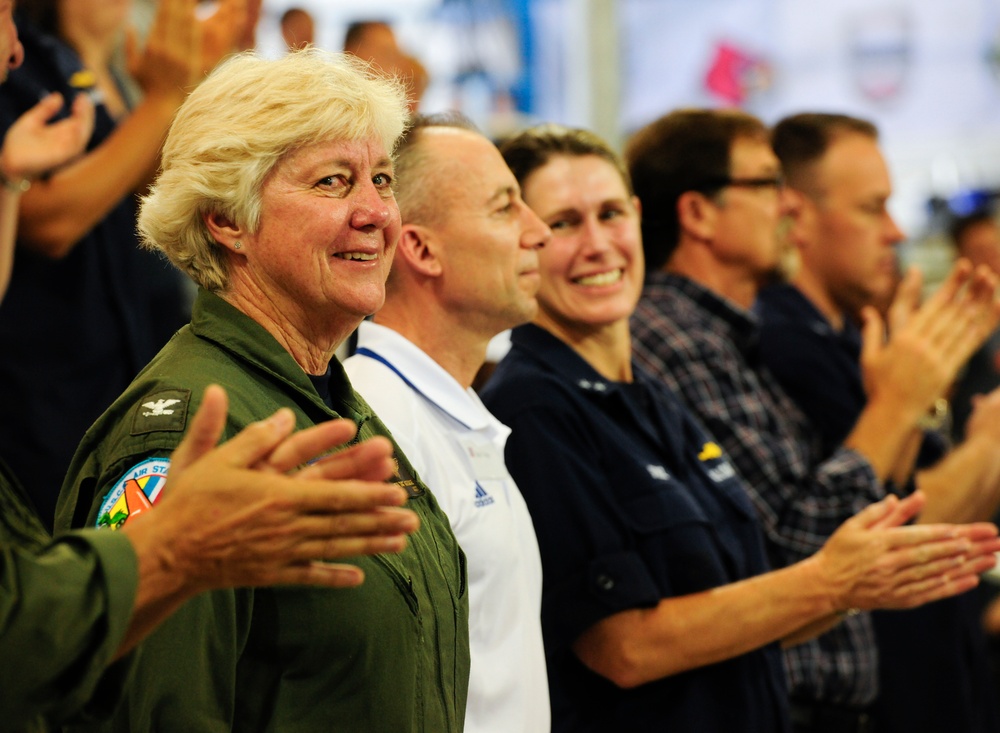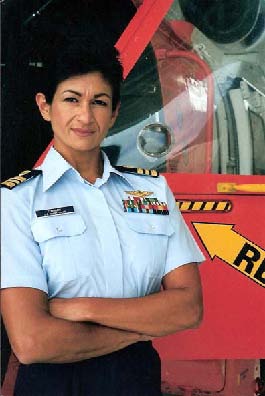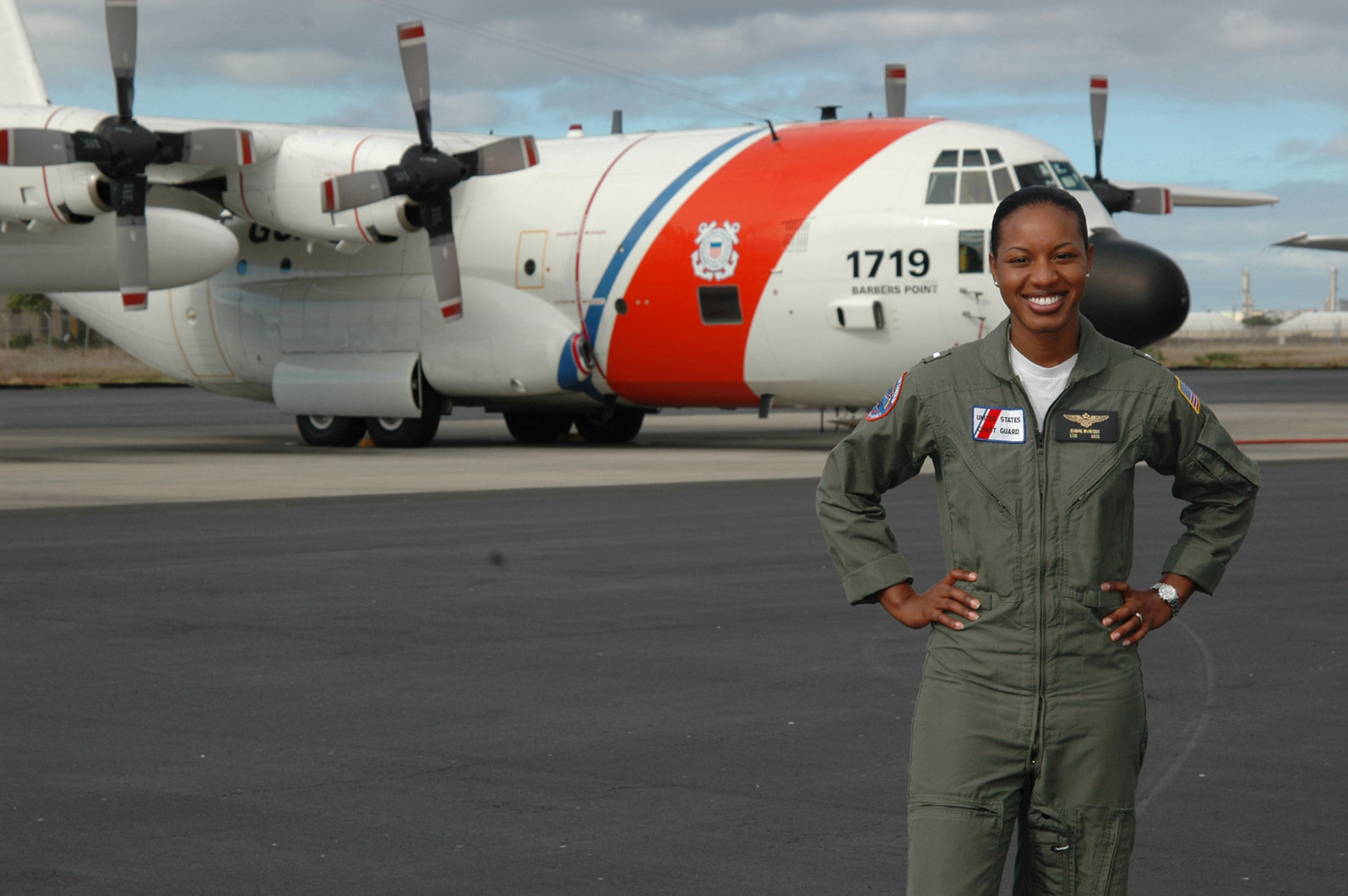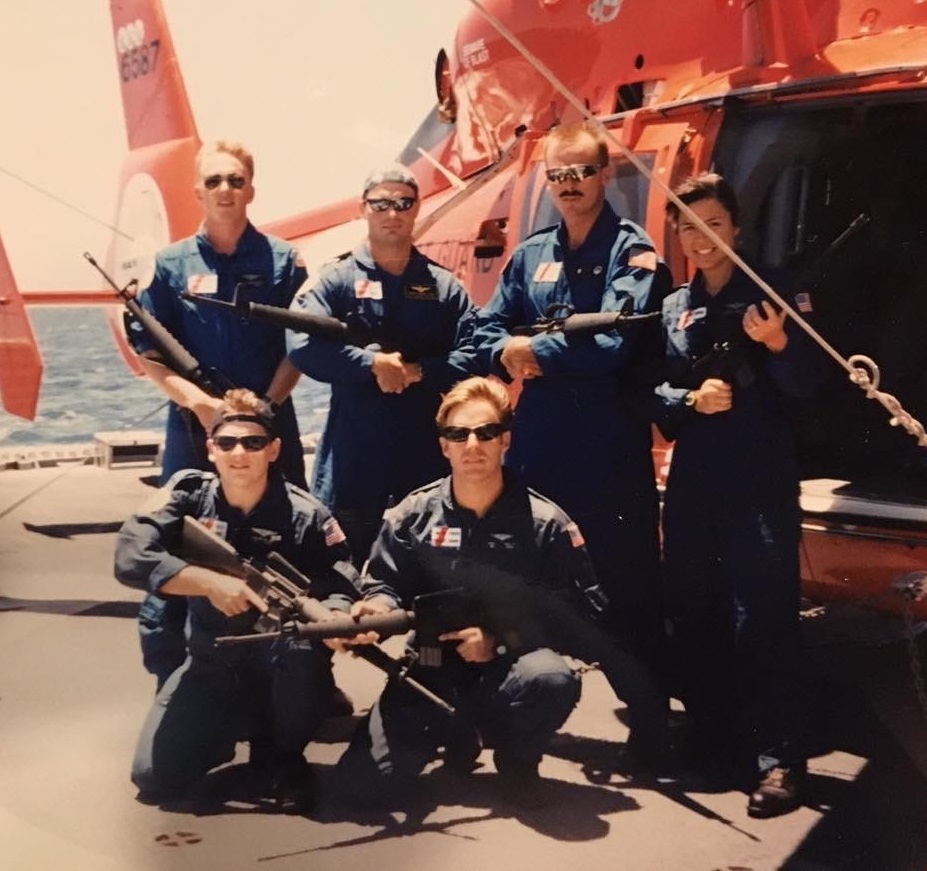March 11, 2022 —
You can do anything you decide to do. You can act to change and control your life, and the procedure, the process, is its own reward.
Pioneering Aviator Amelia Earhart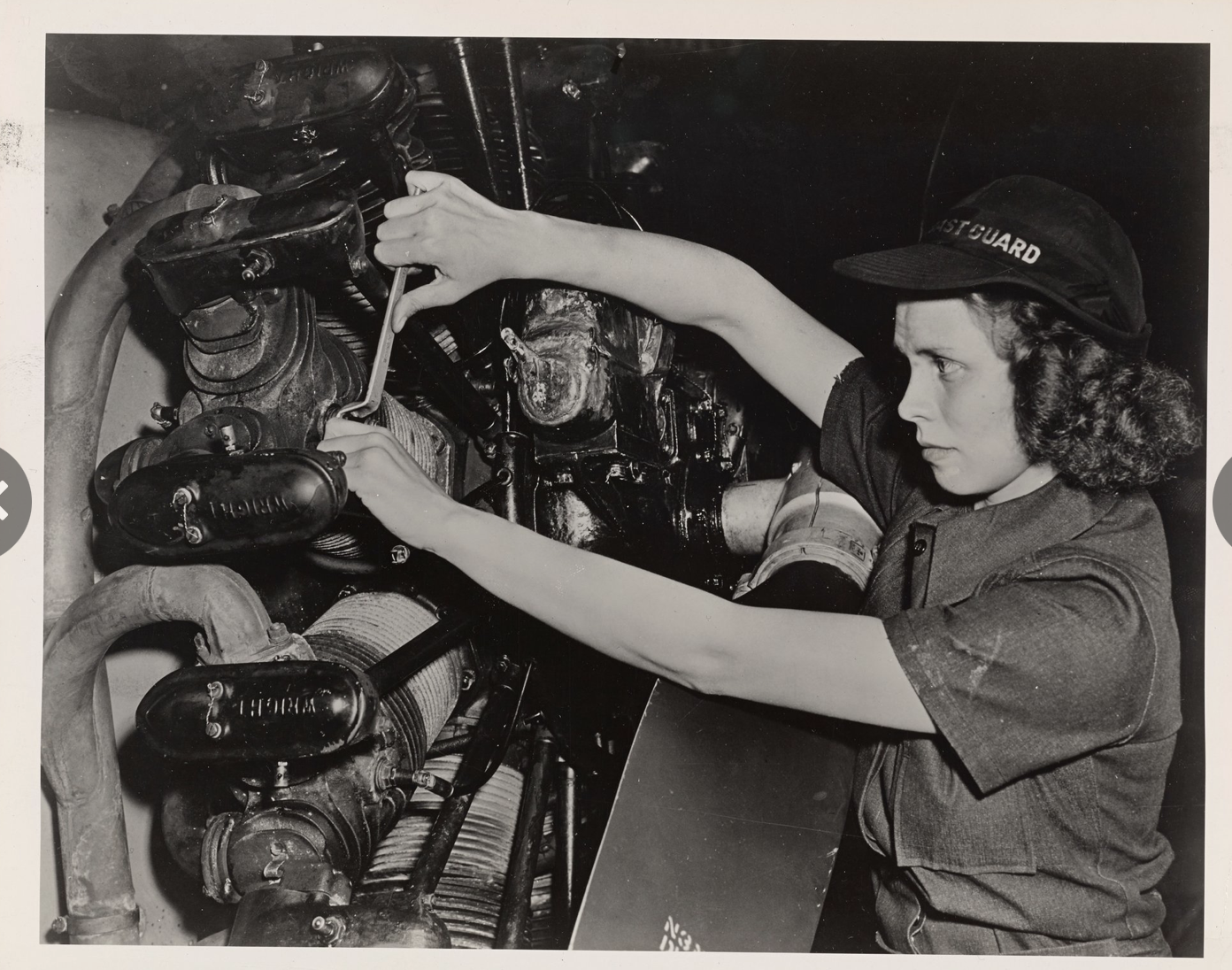
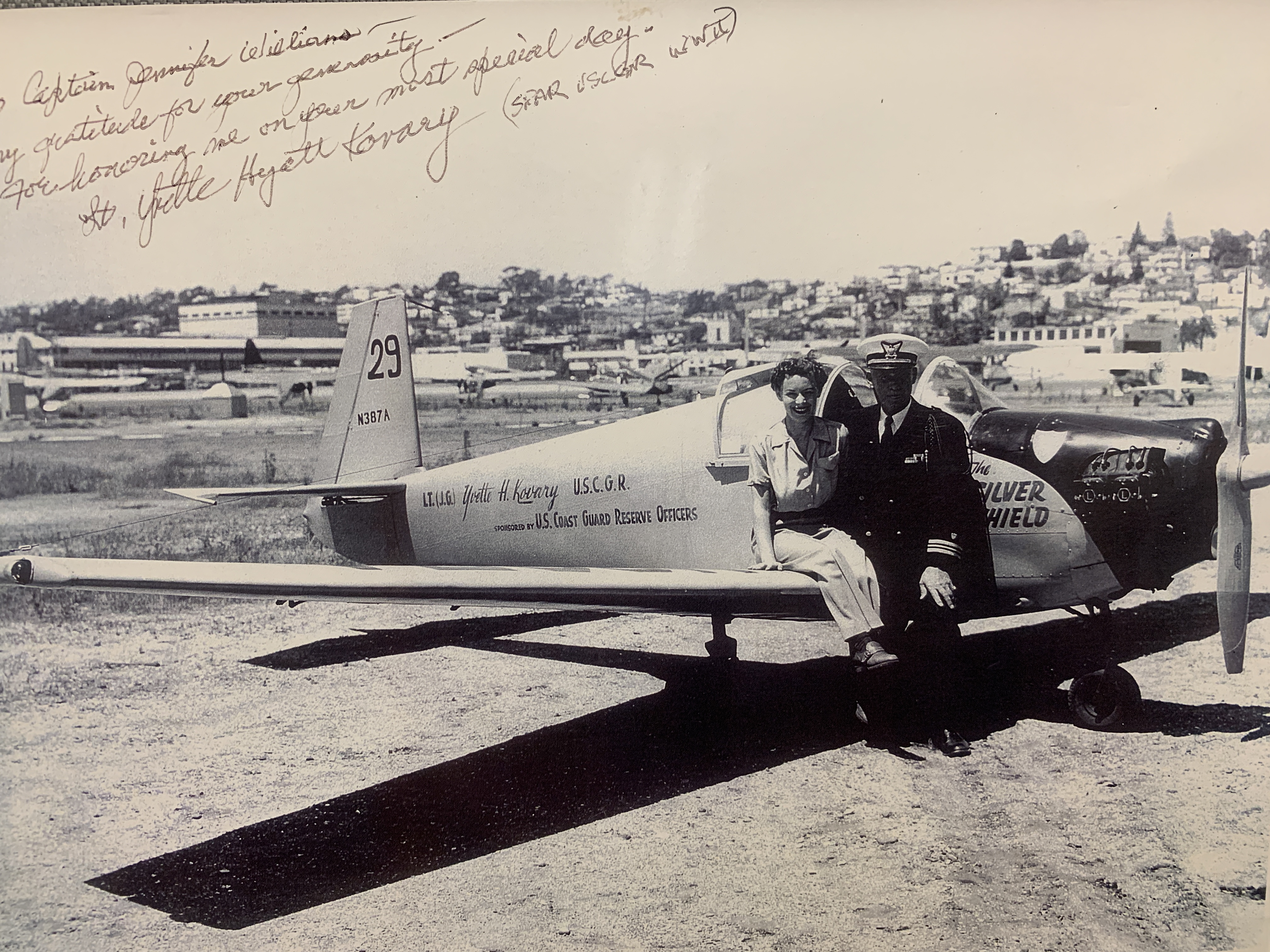 [Author’s note: I wish to thank SPAR historian Donna Vojvodich for providing historical information about SPAR aviation members of World War II.]
[Author’s note: I wish to thank SPAR historian Donna Vojvodich for providing historical information about SPAR aviation members of World War II.]
Over the course of the service’s 232-year history, women have helped shape the Coast Guard and pioneered the role of their gender in the federal government and the nation. Women have also served in Coast Guard aviation for 80 years!
Women first saw service in the Coast Guard aviation branch during World War II. Members of the Women’s Reserve, or SPARS, served in various land-based active duty ratings to free up men for overseas duty. SPARS served as aviation mechanics, aerographers, parachute riggers, air traffic controllers, and link trainer specialists, who provided simulator training for instrument flight in poor-visibility conditions. These women included SPAR mechanics Marian Behrends and Evelyn Doell, link trainer specialist Genevieve McGinnis and parachute rigger Doris Priest. As part of their duties, SPARS also mended aircraft fabric, oversaw aviation tool shops and operated plane tow tractors. At air stations, they also kept track of the books and served as duty officers in the operations office. In addition, SPAR officer Yvette Hyatt Kovary became the first female pilot to fly on behalf of the Coast Guard.
The Coast Guard re-opened enlisted aviation ratings to women, Jan 1, 1976. These ratings were ones in which “their service would not unacceptably impact the sea-isolated/shore duty ration.” Later that year, women began to enter 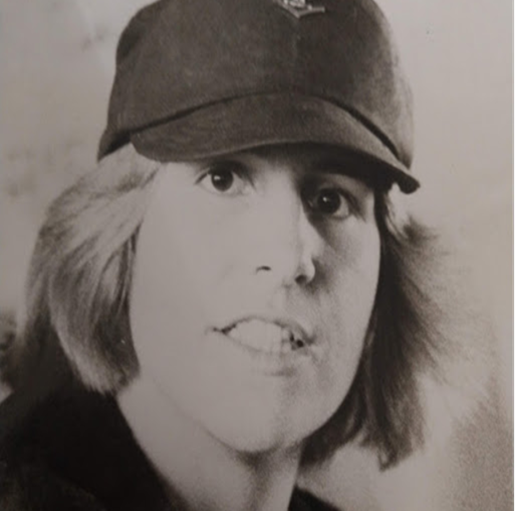 aviation A-schools for aviation survivalman (ASM), aviation machinist’s mate (AD), aviation structural mechanic (AM), aviation electrician’s mate (AE) and aviation electronics technician (AT).
aviation A-schools for aviation survivalman (ASM), aviation machinist’s mate (AD), aviation structural mechanic (AM), aviation electrician’s mate (AE) and aviation electronics technician (AT).
These pioneering women graduated their A-schools for assignments at Coast Guard air stations and began working on fixed-wing and rotary-wing aircraft beside their male counterparts. For example, in April 1976, Dior Yvonne Lowen was accepted into the aviation survivalman A-school becoming the service’s first third class ASM that, at the time, did not include rescue-swimmer duties. In September 1976, Andrea Gardner graduated from the Navy’s Aviation Technical Training School becoming the service’s first female aviation structural mechanic (AM) and AM aircrew member, specializing in the fixed-wing Grumman HU-16E Albatross. In 1977, Robyn Rogers Bregante graduated from AD A-school becoming the first female AD and AD aircrew member. She served in San Francisco and Kodiak and specialized in HH-3 and HH-52 helicopters. In 1976, Elizabeth Uhrig Danaher applied for the Coast Guard Academy’s first female class, but was not selected and chose to enlist. She graduated from the aviation electronics technician (AT) A-school in March 1978 to become the service’s first female third class AT. She served as a navigator and radioman for fixed-wing aircraft, but was later appointed to the Academy. Ensign Uhrig became a Coast Guard C-130 pilot in 1986. Erminia Chillon enlisted in 1976 and in 1978, completed training to become the service’s first female aviation electrician’s mate (AE). She was also the first female AE aircrew member and specialized in HH-52 helicopters. In 1979, Sandra Ward graduated from C-130 Flight Engineer School becoming the service’s first female C-130 flight engineer.
During the 1970s, female officers also began attending flight training. In 1977, Coast Guard Officer Candidate School (OCS) graduate Janna Lambine became the first woman designated a Coast Guard aviator and first female helicopter pilot, specializing in the HH-3F Pelican. During her time as a helicopter pilot, she also became the first woman to land an aircraft on a ship. A 1978 OCS graduate, Vivien Crea became the second woman designated a Coast Guard aviator. She was the service’s first female fixed-wing aircraft pilot, qualifying first in the C-130 Hercules turboprop and later in the HH-65 Dolphin helicopter and Gulfstream II jet.
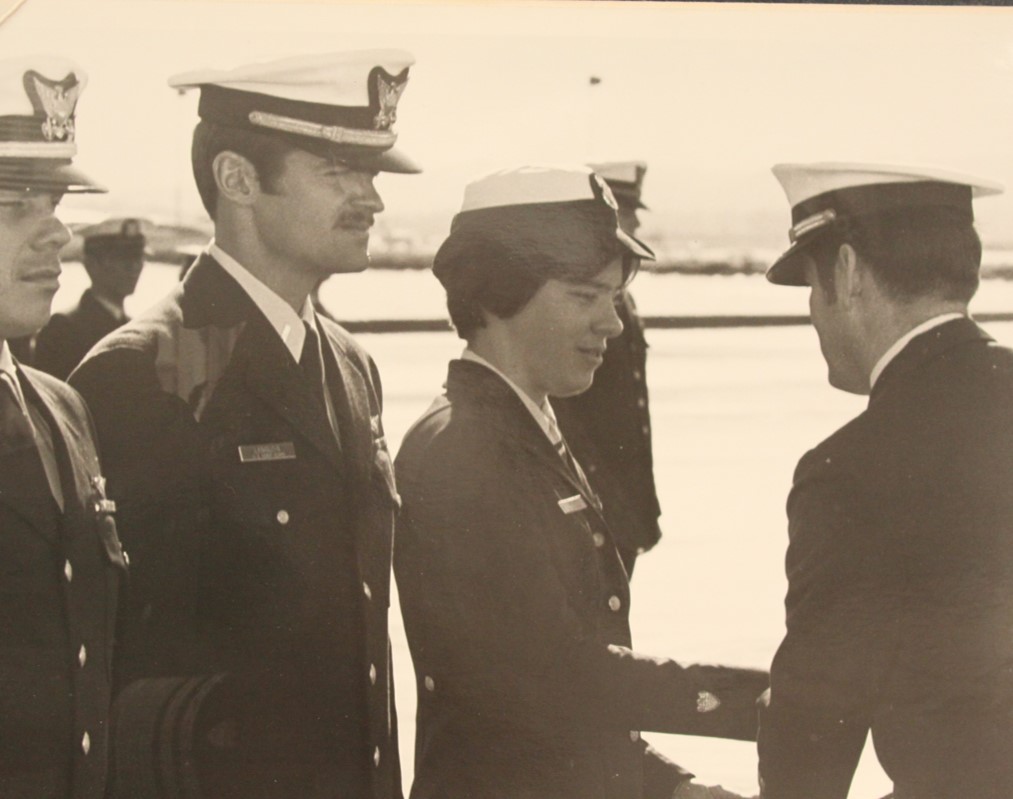 Colleen Cain, a 1976 OCS graduate, attended flight school and, in 1979, became the service’s third female aviator. Lt. j.g. Colleen Cain became the first female HH-52 helicopter pilot, co-pilot, and aircraft commander. In 1981, she became the first Coast Guard woman awarded the Coast Guard Achievement Medal. Unfortunately, during a rescue case on Jan. 7, 1982, the helicopter that Cain co-piloted out of Barbers Point, Hawaii, crashed in heavy weather killing the aircrew. Cain was the
Colleen Cain, a 1976 OCS graduate, attended flight school and, in 1979, became the service’s third female aviator. Lt. j.g. Colleen Cain became the first female HH-52 helicopter pilot, co-pilot, and aircraft commander. In 1981, she became the first Coast Guard woman awarded the Coast Guard Achievement Medal. Unfortunately, during a rescue case on Jan. 7, 1982, the helicopter that Cain co-piloted out of Barbers Point, Hawaii, crashed in heavy weather killing the aircrew. Cain was the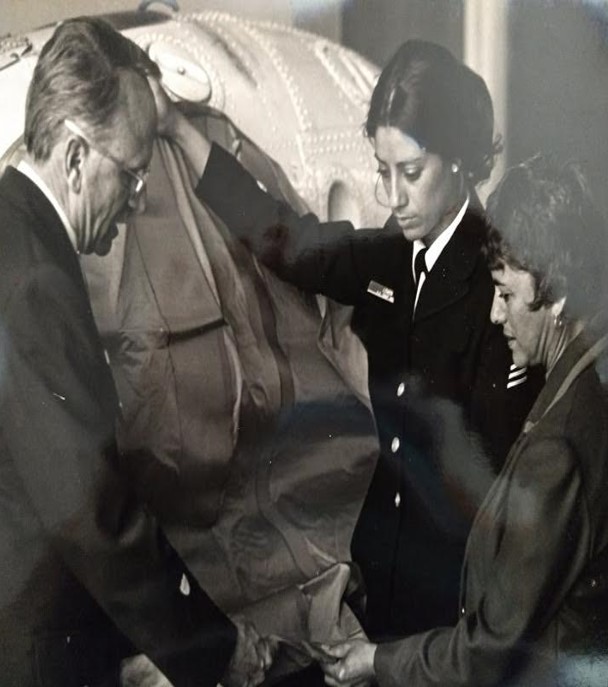 first coast Guard woman in the history of the service to die in the line of duty.
first coast Guard woman in the history of the service to die in the line of duty.
In the 1980s, women logged more firsts in Coast Guard aviation. In July 1982, Petty Officer 1st Class Jenny Cater, and aviation electronics technician, became the first female instructor at the Aviation Technical Training Center at Air Station Elizabeth City and, on July 1, 1985, Carter became the first woman to advance to chief petty officer in the enlisted aviation ratings. On June 3, 1985, the first Coast Guard aircraft flown by two female pilots conducted a SAR mission off the west coast of Florida. The flight crew consisted of Lt. j.g. Vickie Karnes and Lt. j.g. Cathy Bierne, who flew an HU-25A out of Air Station Miami. In 1987, Lt. Cmdr. Vivien Crea transferred to Air Station Borinquen and would become Coast Guard aviation’s first female operations officer.
Kelly Mogk Larson enlisted in the Coast Guard in 1984. In 1986, she attended the aviation survivalman A-school. Next, she became the first woman to complete the U.S. Navy’s Rescue Swimmer School and the Coast Guard’s first female rescue swimmer. In 1989, Larson’s rescue of a downed aviator earned her the first Air Medal awarded to a female aviator and the congratulations of President George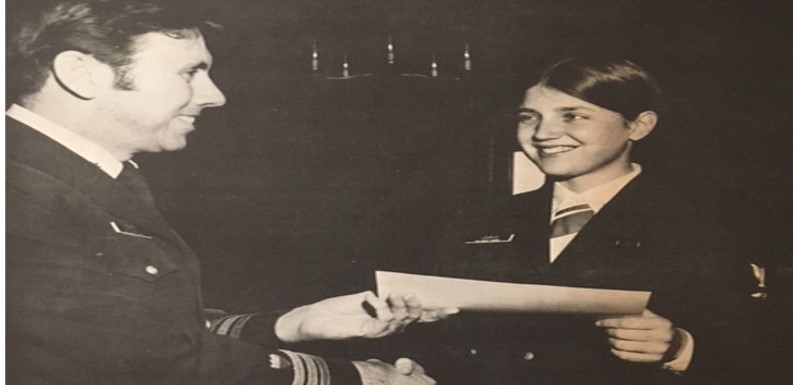 H.W. Bush. During the rescue, Larson exposed herself to hypothermic conditions to free a downed Navy fighter pilot from his parachute and she waited in the water for a second helicopter while hers rushed the victim to a hospital. Larson attended OCS in 1993, received an officer’s commission and became a Coast Guard helicopter pilot in 1996.
H.W. Bush. During the rescue, Larson exposed herself to hypothermic conditions to free a downed Navy fighter pilot from his parachute and she waited in the water for a second helicopter while hers rushed the victim to a hospital. Larson attended OCS in 1993, received an officer’s commission and became a Coast Guard helicopter pilot in 1996.
In the 1990s, female aviators garnered greater recognition in the Coast Guard. These women included Ensig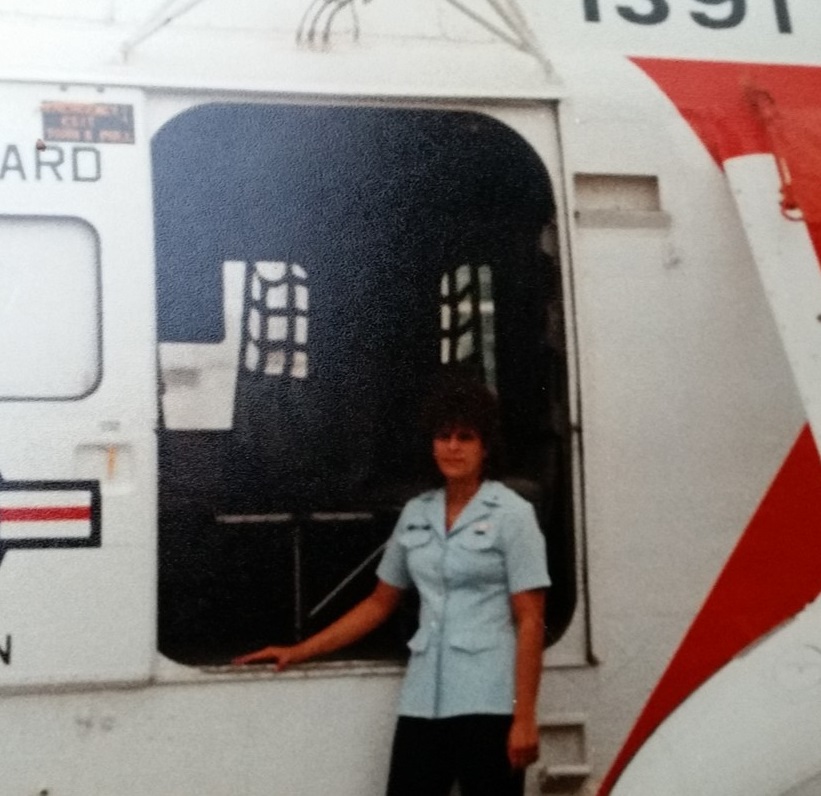 n Patricia McFetridge, who in 1990 became the first female aviator to receive the Distinguished Flying Cross along with the rest of the aircrew of an HH-3F that rescued Fishing Vessel Janice N in Alaska. As part of that aircrew, she was also the first woman to receive the National Helicopter Association award for SAR Aircrew of the Year. In 1991, Lt. Laura Guth received an Air Medal for piloting the HH-3F helicopter that rescued the crew of Fishing Vessel Alaskan Monarch, which foundered in heavy ice in Alaska. In 1994, Lt. Alda Siebrand
n Patricia McFetridge, who in 1990 became the first female aviator to receive the Distinguished Flying Cross along with the rest of the aircrew of an HH-3F that rescued Fishing Vessel Janice N in Alaska. As part of that aircrew, she was also the first woman to receive the National Helicopter Association award for SAR Aircrew of the Year. In 1991, Lt. Laura Guth received an Air Medal for piloting the HH-3F helicopter that rescued the crew of Fishing Vessel Alaskan Monarch, which foundered in heavy ice in Alaska. In 1994, Lt. Alda Siebrand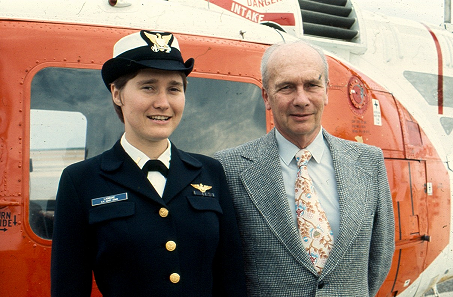 s became the first female aviator to receive a Coast Guard Medal for an aviation rescue.
s became the first female aviator to receive a Coast Guard Medal for an aviation rescue.
The 1990s also saw minority women break color barriers in the aviation branch. In 1991 Marilyn Melendez Dykman, a Hispanic-American direct commissioned officer from the Army, become the service’s first minority female aviator. In 1995, Coast Guard Academy graduate Mara Huling Langevin became the first female Coast Guard Academy graduate and Asian-American woman to become an aviator in the Coast Guard.
The 1990s saw other barriers broken. In S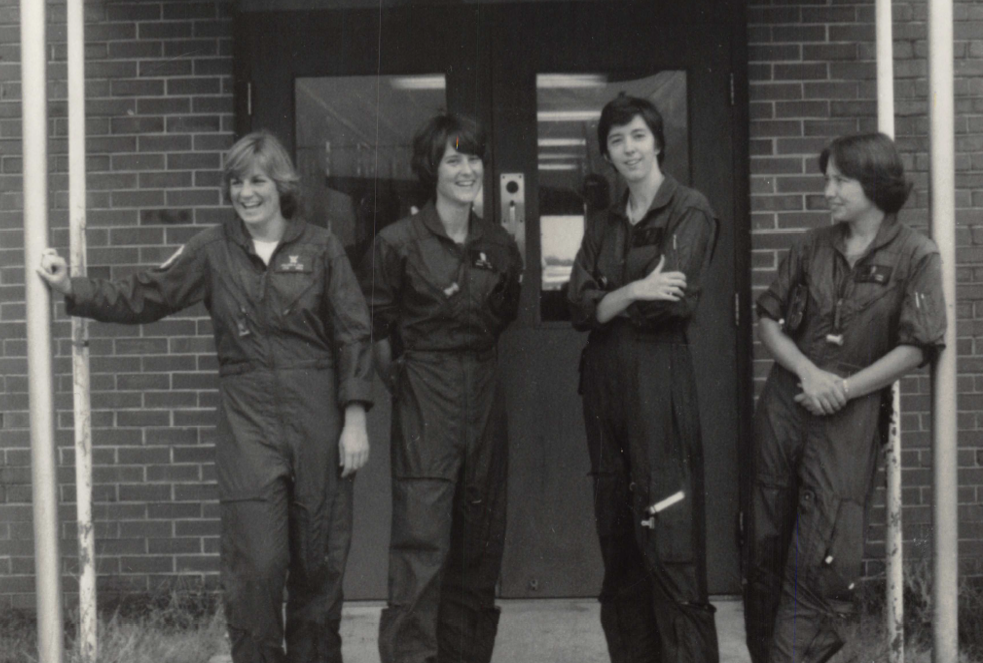 eptember 1991 Carter advanced to senior chief petty officer, becoming the first woman to advance to E8 in the Coast Guard aviation ratings. And in 1995 Carter advanced to master chief petty o
eptember 1991 Carter advanced to senior chief petty officer, becoming the first woman to advance to E8 in the Coast Guard aviation ratings. And in 1995 Carter advanced to master chief petty o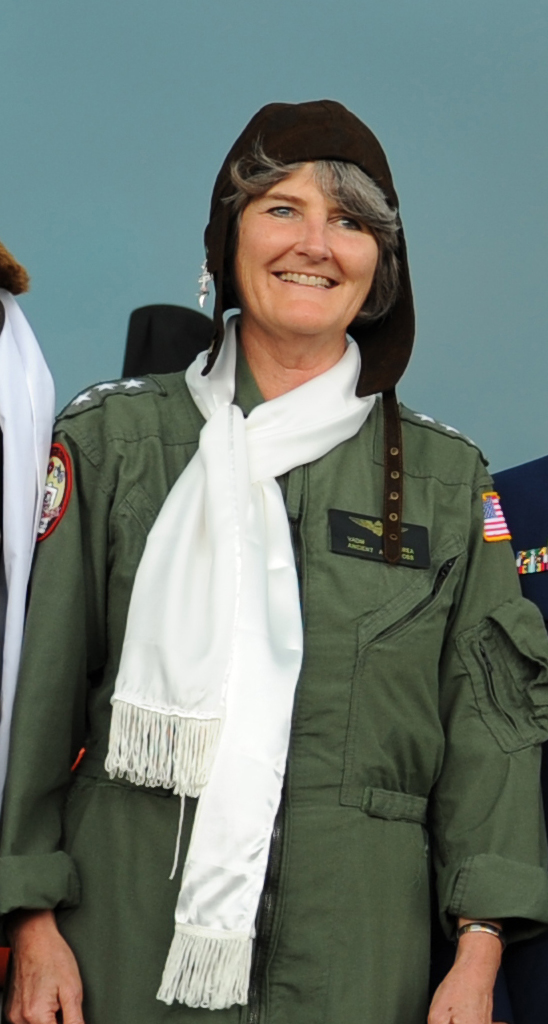 fficer, once again setting a first as the first woman to advance to E9 in the Coast Guard aviation ratings. In addition, in 1992, Cmdr. Vivien Crea became the first woman to command an air station when she assumed command of Air Station Detroit.
fficer, once again setting a first as the first woman to advance to E9 in the Coast Guard aviation ratings. In addition, in 1992, Cmdr. Vivien Crea became the first woman to command an air station when she assumed command of Air Station Detroit.
These years also saw many firsts for African-American women in Coast Guard aviation. As early as 1989, Cheri Ben-Iesau graduated from aviation survivalman A-school to become the first African-American female ASM. In 1994, Diane Perry became the first female African-American aviation electrician’s mate. In 2005, Lt. j.g. Jeanine McIntosh-Menze became the first African-American female Coast Guard aviator piloting fixed wing C-130s. In 2007, Petty Officer 2nd Class Katrina Cooley, an aviation maintenance technician, became the first African-American female flight mechanic. In 2010, Lt. j.g. La’Shanda Holmes became the service’s first African-American female helicopter pilot. And, in 2019, Lt. Ronaqua Russell, a native of the U.S. Virgin Islands, became the first African-American female aviator in the Coast Guard to receive the Air Medal.
Women broke more Coast Guard aviation barriers in the 2000s. In 2004, Capt. Vivien Crea became the first Coast Guard woman promoted to flag rank. In De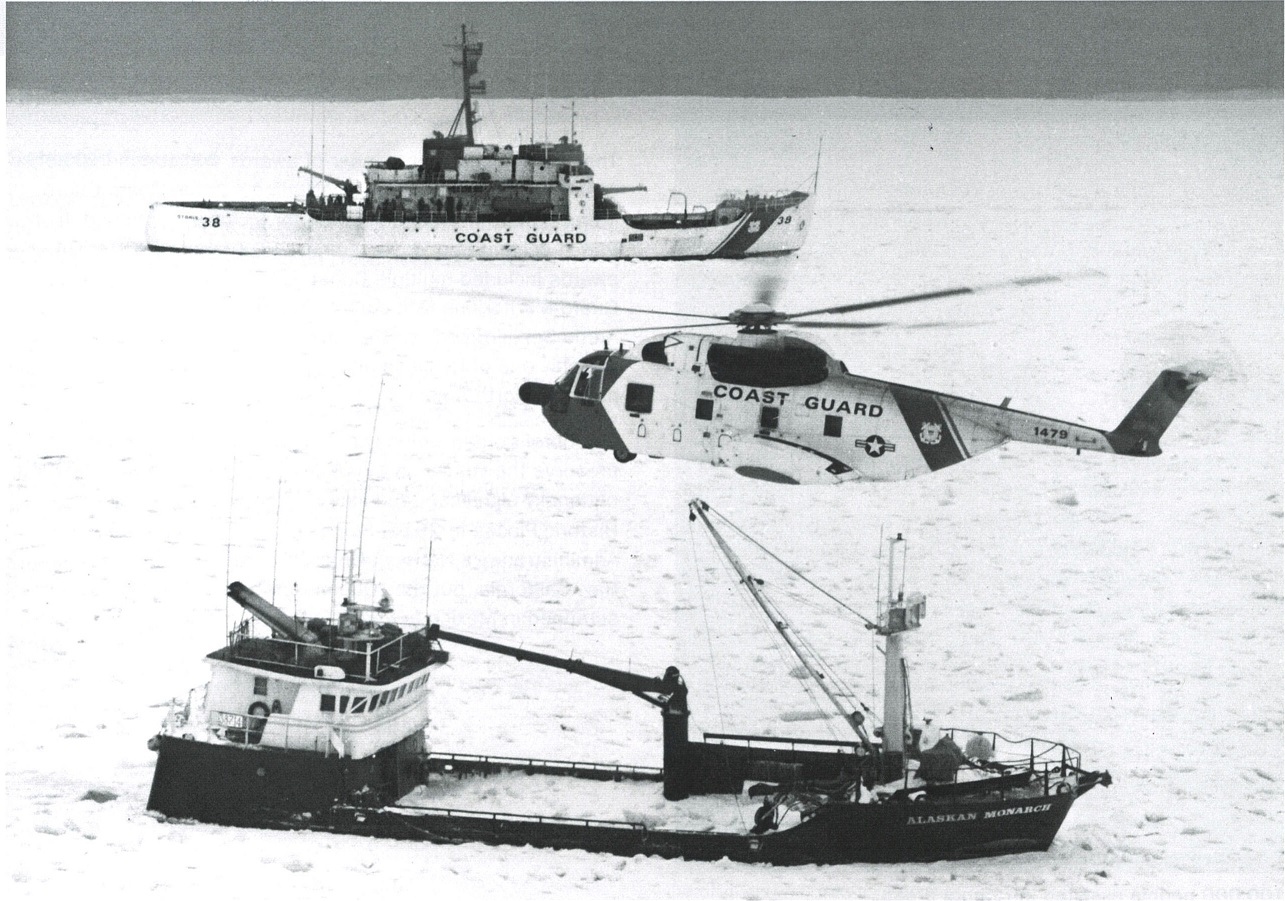 cember 2003, helicopter pilot Lt. Cmdr. Sidonie Bosin was recognized by the First Flight Centennial Commission’s 100 Heroes Committee as being one of the “top 100 aviators of all time.” She was also the first female aviation officer in charge of aircrews deployed to an icebreaker aboard Polar Star, and served as part of an all-female flight crew on that icebreaker. In 2010,
cember 2003, helicopter pilot Lt. Cmdr. Sidonie Bosin was recognized by the First Flight Centennial Commission’s 100 Heroes Committee as being one of the “top 100 aviators of all time.” She was also the first female aviation officer in charge of aircrews deployed to an icebreaker aboard Polar Star, and served as part of an all-female flight crew on that icebreaker. In 2010,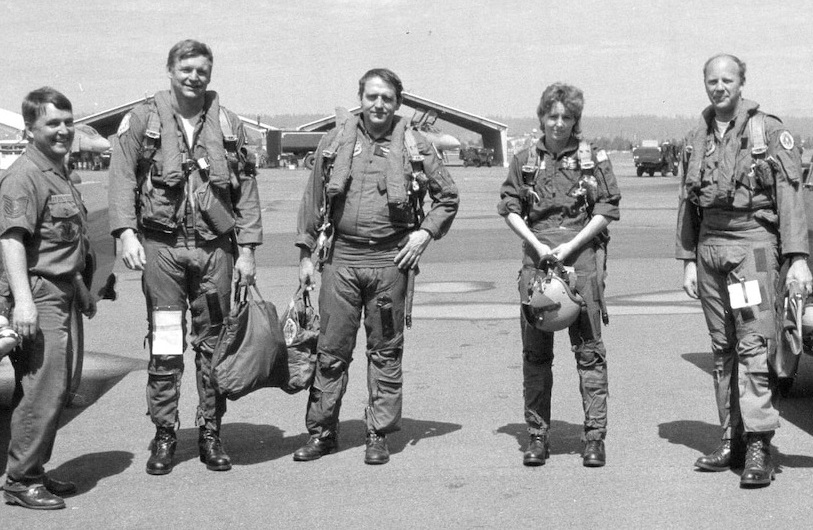 Vivien Crea was recognized by Women in Aviation International as a member of their Pioneer Hall of Fame. In May of that year, Petty Officer 1st Class Karen Voorhees, an aviation survival technician, became the first woman to advance to chief petty officer in the aviation survival technician rating in the Coast Guard.
Vivien Crea was recognized by Women in Aviation International as a member of their Pioneer Hall of Fame. In May of that year, Petty Officer 1st Class Karen Voorhees, an aviation survival technician, became the first woman to advance to chief petty officer in the aviation survival technician rating in the Coast Guard.
Women have walked the long blue line since the very beginning of the service. They have helped shape the U.S. Coast Guard into a better institution for all men and women and they will play an even greater role in shaping the service in the 21st century.
